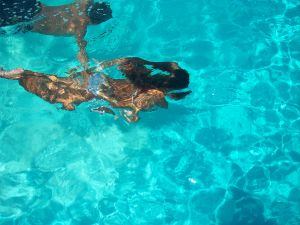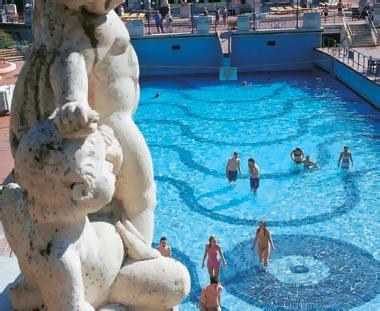Travel Tips
Are Hotel Kids’ Club Swimming Sessions Safe?
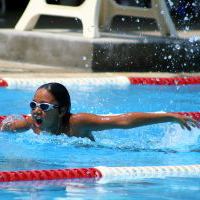 Kids’ clubs are an important hotel amenity for traveling families, often giving parents a much-needed break while kids are engaged.
Kids’ clubs are an important hotel amenity for traveling families, often giving parents a much-needed break while kids are engaged.
But the challenge is there are no standard industry best practices followed for kids’ clubs and quality can be unpredictable.
Guest blogger Amie O’Shaughnessy, of family travel site Ciao Bambino, shares tips on determining if a hotel’s swimming program is right for your child.
A hotel with a well-run kids program can be worth its weight in gold, especially for parents looking to spend some vacation time without worrying about the kids. However, many hotel kids’ programs include swimming as a group activity. Different hotels determine their own rules, which means as a participating family, it is up to you to gauge if the program meets your criteria for safety.
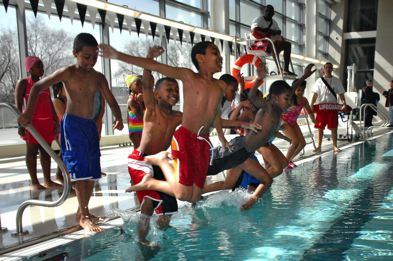 Erroneous Assumptions About Safety
Erroneous Assumptions About Safety
I recently discovered just how important it is for parents to do their homework before assuming a hotel will be diligent about swimming safety. It’s tempting to assume that a well-known hotel brand means all is in order or that the number of families participating is indicative of a safe environment.
Recently our 7-year-old son took part in a program at a top luxury hotel that included swimming. I asked questions (though, in retrospect, not enough of them).
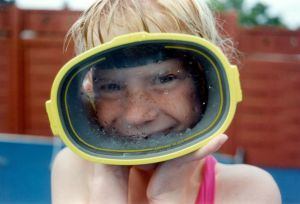 When I picked him up early and saw the program in full swing with the two instructors on one side of the school and the kids on the other, I was immediately uncomfortable. At one point, the instructors got busy with a request and had their eyes off the pool for a minute—60 seconds too long, in my book.
When I picked him up early and saw the program in full swing with the two instructors on one side of the school and the kids on the other, I was immediately uncomfortable. At one point, the instructors got busy with a request and had their eyes off the pool for a minute—60 seconds too long, in my book.
This incident was a wake-up call for me. I recently hosted a Facebook discussion as a way to facilitate an online conversation with our community of respected family travel writers for their thoughts on this important topic.
Kids’ Club Swimming Best Practices
In the discussion, each family travel writer outlined his or her priorities and views around swimming safety in a hotel environment. There were a few points that came up again and again.
- Child-to-instructor ratios
- 4-to-1 is the magic number for child-to-instructor ratios.
- Instructor training
Everyone agrees that instructors need to be CPR certified. Is this enough?
I’d argue that this is sufficient only in cases where 4-to-1 ratios are followed without exception. Otherwise, it’s necessary to have lifeguards present at the pool watching the water without distractions, i.e., they are not engaged in any unrelated parent and/or child communication and without any electronic devices.
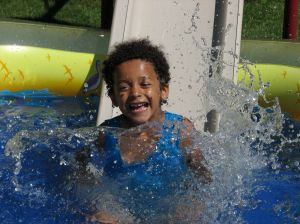 This kind of staffing may be a challenge for properties to manage consistently through peak and non-peak periods. Jamie Pearson, editor of Travel Savvy Mom, describes her decision to rarely let her 8 and 10-year-old children swim without at least a parent present as a “straight cost/benefit analysis.”
This kind of staffing may be a challenge for properties to manage consistently through peak and non-peak periods. Jamie Pearson, editor of Travel Savvy Mom, describes her decision to rarely let her 8 and 10-year-old children swim without at least a parent present as a “straight cost/benefit analysis.”
I have a hunch that if hotels looked at the equation this way that they’d have their answer. Either staff programs adequately at all times or only include swimming as an option when you can do so.
Amy Hagstrom Whitley, editor of Pit Stop for Kids, highlights an important point to consider: “Child program leaders are different than qualified lifeguards and should never be confused or misrepresented by the resort.”
For more ideas on fun in the water, visit our Water Sports section
A few parents mention swim tests as a way to determine how swimming should be handled with individual kids. This is a great idea for programs that involve consistently longer stays, but may be challenging in practice for hotels that have a revolving door of guests. Regardless, no hotel should rely on kids as the source for their own swimming assessments.
At a minimum, the parent needs to be proactively consulted about swimming abilities at the initial check-in verbally and again in writing. In addition, I’d like to see hotels provide detail in writing around exactly what swimming looks like in their program. For example, shallow-end only, list of any games played, policy on instructors in the water, and so on.
After reading the swimming program outline and consulting with the instructor, the parent should clearly communicate if they’d like their child to participate or not.
Find more tips in our Family Travel / Traveling With Kids main section
Looking back, it’s disconcerting how many times I’ve had to proactively ask about swimming and opt out of a program accordingly. Hotels have their part in clearly and consistently communicating what they are doing with kids in and around water (this includes beach visits too).
Parents who are uncomfortable can always choose to be present during swimming periods. Instructors need to be specific around when swimming will take place for this to happen, although admittedly, having to watch your kids in the pool seems to defeat the purpose of having your kids go to a club where you get some downtime, and moreover, this may be aggravating in programs where you are paying a fee for your kids to participate. That said, none of this matters when it comes down to safety.
Alternative Activities Offered
I know this is a tricky point for hotels. Many programs aren’t staffed to have some kids in and some kids out of the water. I have to say, too bad. If a property offers swimming, they must offer parents this choice, particularly for programs that are fee-based.
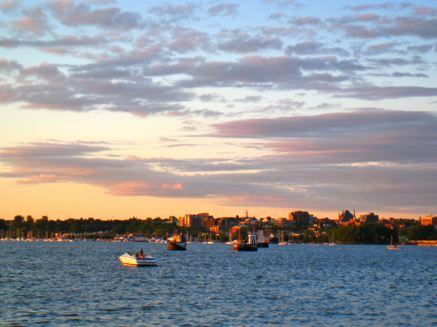 Which Hotels Do It Right?
Which Hotels Do It Right?
The good news is that there are plenty of examples of hotels that have thoughtfully managed programs. I recently spoke with Stacy Adelman, the kids’ program manager at Montage Laguna Beach.
Although their Paintbox program does not include certified lifeguards at all times, I appreciate her meticulous approach and acknowledgment that watching kids is a very big deal.
“Fun and safety go hand in hand at Montage,” says Adelman. “We understand that we are responsible for parents’ most precious jewels. When children are in our care we have a “Magic Number,” which is 3-to-one, child-to-staff ratio. When we take the children to both the beach and the pool, we make sure that we establish boundaries and make it clear where they can and cannot go.”
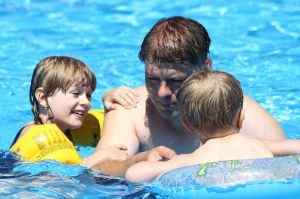 She also stresses the importance of having staff participate in every activity with the kids. “There will never be a time when you see our staff sitting down watching the children play! This not only is more fun for the children but is also a way to keep them all together and make sure that the Magic Number is intact.”
She also stresses the importance of having staff participate in every activity with the kids. “There will never be a time when you see our staff sitting down watching the children play! This not only is more fun for the children but is also a way to keep them all together and make sure that the Magic Number is intact.”
Suzanne Rowan Kelleher of family travel site, WeJustGotBack.com, gives a good example of a water-oriented resort with black-and-white rules: “At The Tyler Place in Vermont much of the kids’ programming centers on lake activities. The rule there: all kids, regardless of age, wear life vests. The counselors wear them too. No exceptions, no stigma, no problems.”
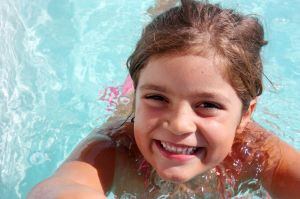 For me, this is a powerful example of hotel management taking swimming seriously. Great Wolf Lodge, the chain of indoor waterpark resorts, Kalahari Resorts water parks, and Atlantis in the Bahamas were all mentioned as additional examples of hotels that do a great job handling swimming.
For me, this is a powerful example of hotel management taking swimming seriously. Great Wolf Lodge, the chain of indoor waterpark resorts, Kalahari Resorts water parks, and Atlantis in the Bahamas were all mentioned as additional examples of hotels that do a great job handling swimming.
Ultimately, it is up to the parent to determine if a resort is taking water safety seriously enough. Don’t be afraid to ask very detailed questions and opt out if you don’t like the answers. If you are uncomfortable with a program, take the time to communicate concerns to senior hotel management. High-quality hotels (regardless of room rates) have general managers who are usually open and willing to listen to feedback and make changes accordingly.
By Amie O’Shaughnessy for PeterGreenberg.com. Amie is the editor of CiaoBambino.com, a resource site for traveling with kids.
Related links on PeterGreenberg.com:










